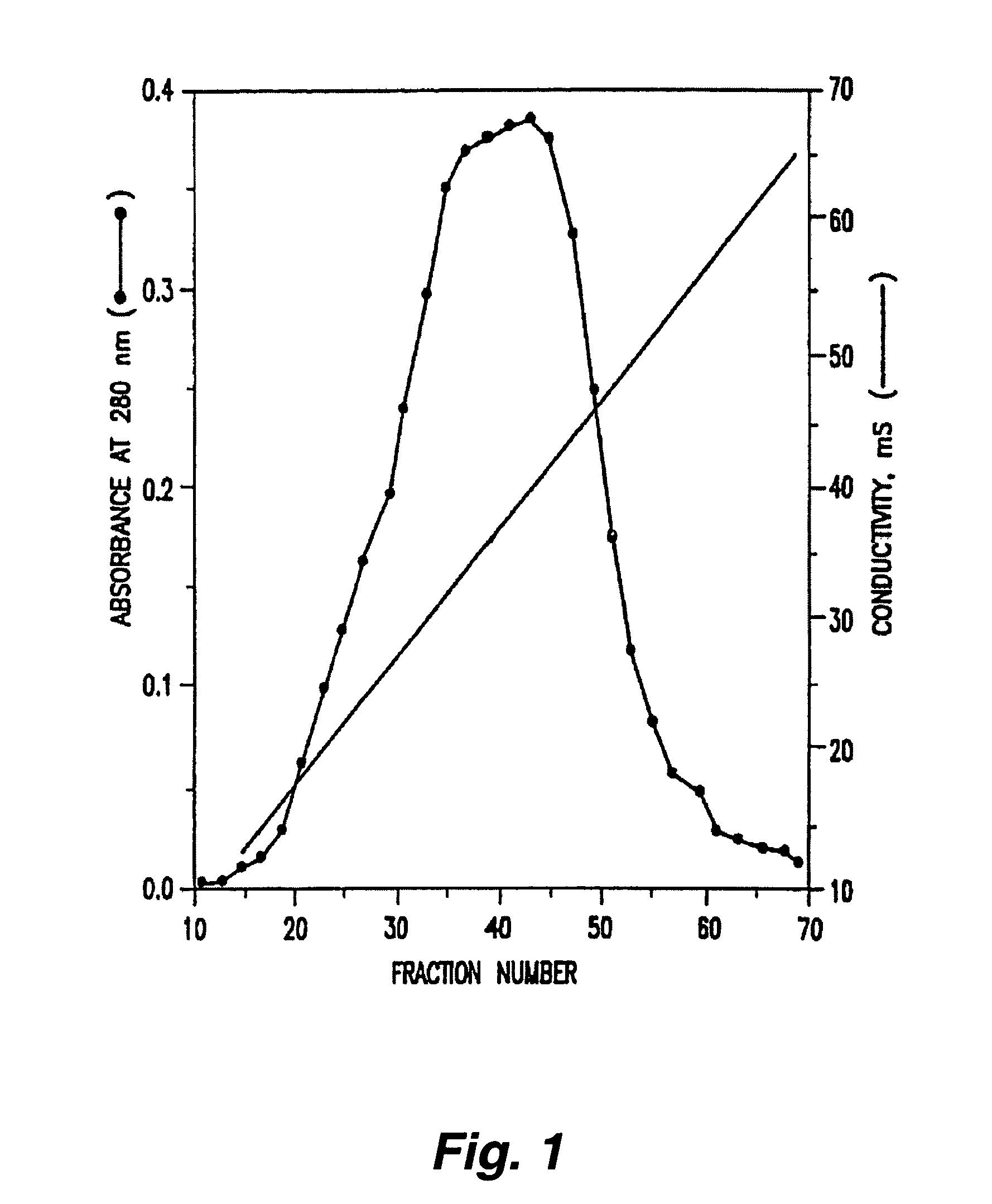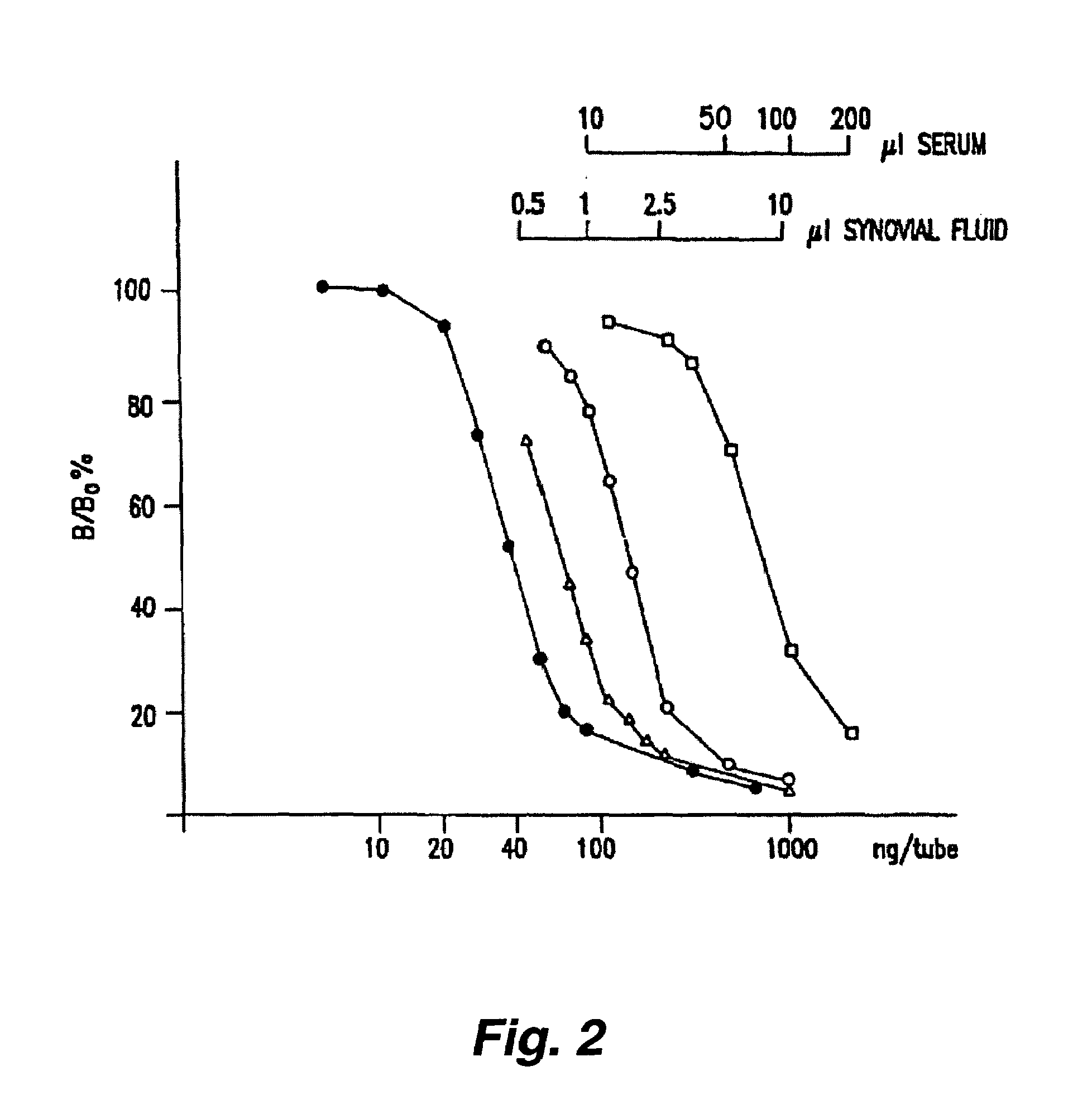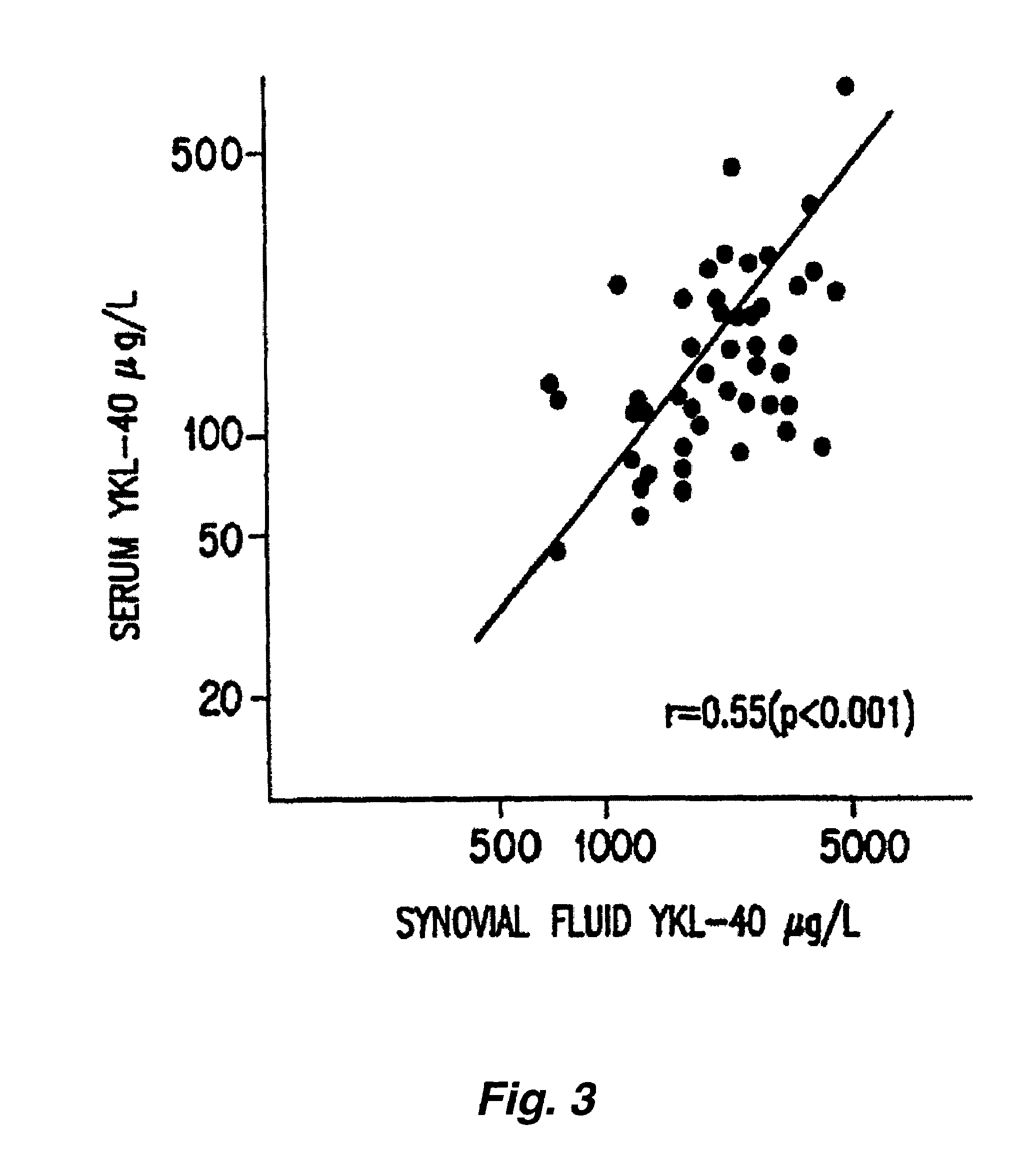Assay for YKL-40 as a marker for degradation of mammalian connective tissue matrices
a technology of mammalian connective tissue and ykl40, which is applied in the field of identification of a circulating protein associated with, can solve the problems of difficult development of assays for their detection, uncertainty of correlation to metabolism in a particular tissue based on circulating levels of the molecule, and difficulty in distinguishing between the two states based on p-iii-np levels alon
- Summary
- Abstract
- Description
- Claims
- Application Information
AI Technical Summary
Benefits of technology
Problems solved by technology
Method used
Image
Examples
example i
Isolation and Purification of YKL-40 from Human Osteosarcoma Cell Line MG63
[0093]YKL-40 was purified from serum-free conditioned medium of the human osteosarcoma cell line MG63 (MG63 cells were obtained from the American Type Culture Collection, Rockville, Md.). Cells were cultured in 100 mm dishes with RPMI 1640 medium containing 10% newborn calf serum, 100 Units / ml penicillin, 100 μg / ml streptomycin, 50 μg / ml vitamin C, and 1 μg / ml vitamin K.sub.1. The cultures were incubated at 37.degree. C. in a humidified atmosphere of 10% CO.sub.2. When the cells reached confluence, the culture medium was removed and the cell layer was washed twice with 10 milliliters (ml) of phosphate buffered saline.
[0094]Ten mls of serum-free RPMI 1640 media containing 50 μg / ml vitamin C and 1 μg / ml vitamin K1 was then added to each dish. 48 hours later, conditioned medium was decanted from each dish and replaced with 10 ml of fresh serum-free medium containing the same level of added constituents. This pro...
example ii
Preparation of Assay Samples for Radioimmunoassay
1. Assay Sample Sources
[0098]Assay samples were obtained from the sera of 49 patients with inflammatory or degenerative joint diseases (34 women and 15 men, aged 23-80 years with a median age of 65 years). 29 patients had RA, 7 had osteoarthritis, 4 had crystal arthritis, 2 had psoriatic arthritis, 5 had reactive arthritis and 2 had monoarthritis. Diagnoses were based on the criteria described in Arnett, et al. (1988) Arthritis Rheum. 31: 315-324 (American Rheumatism Association Standards), clinical and radiographic examinations of the knees, and direct microscopy of synovial fluid. The patients had a serum CRP level of 25-1600 (median 165). 34 patients were taking non-steroidal anti-inflammatory drugs and 17 were receiving slow acting antirheumatic agents. 15 patients had received glucocorticoid therapy systemically or locally within the past 3 months. The inflammation of the knee was evaluated by a clinical index rating from 0-6, co...
example iii
Preparation of Labelled Antigen and Antibodies for Radioimmunoassay for YKL-40
1. Preparation of Radioiodinated YKL-40
[0100]Purified YKL-40 was labelled with 125I (sodium salt, Amersham, UK) according to the Iodogen method referenced supra. Specifically, 10 μg YKL-40 was incubated for 10 minutes with 18.5 MBq 125I using 2 μg of iodogen (Pierce and Warriner, Chester, England, UK) as oxidant in a reaction volume of 110 μl. Iodination was terminated by moving the reaction mixture from the iodogen tube. The labelled YKL-40 was separated from free iodine by gel filtration using a SEPHADEX G-25 column (1.times.12.5 cm, from Pharmacia) equilibrated with assay buffer (16 mM sodium phosphate buffer pH 7.4, 0.12 M NaCl, 0.1% (w / v) human serum albumin). The calculated specific activity of the labeled was about 15 Ci / g. The elution position of YKL-40 (purified) and of YKL-40 taken from the serum of a patient with RA is shown in FIG. 1.
2. Preparation of Antibodies
[0101]New Zealand white rabbits w...
PUM
| Property | Measurement | Unit |
|---|---|---|
| concentration | aaaaa | aaaaa |
| concentration | aaaaa | aaaaa |
| concentration | aaaaa | aaaaa |
Abstract
Description
Claims
Application Information
 Login to View More
Login to View More - R&D
- Intellectual Property
- Life Sciences
- Materials
- Tech Scout
- Unparalleled Data Quality
- Higher Quality Content
- 60% Fewer Hallucinations
Browse by: Latest US Patents, China's latest patents, Technical Efficacy Thesaurus, Application Domain, Technology Topic, Popular Technical Reports.
© 2025 PatSnap. All rights reserved.Legal|Privacy policy|Modern Slavery Act Transparency Statement|Sitemap|About US| Contact US: help@patsnap.com



